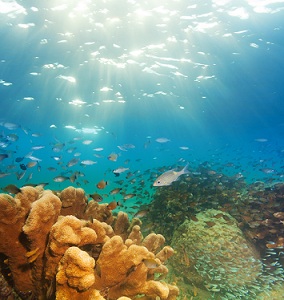Understanding underwater – an in-depth approach to what lies beneath

Related topics
Aquatic Resources Innovation Marine and maritime and inland water research Denmark France Germany Italy Spain United Kingdom Environment Norwaydate: 17/02/2014
Project: The Deep Sea & Sub-Seafloor Frontier
acronym: DS3F
See also: CORDIS
Contact: http://www.deep-sea-frontier.eu/
Deep-sea sustainability is an increasingly urgent socioeconomic concern, as deep-sea fishing, hydrocarbon exploitation and mineral extraction are affecting this remote environment at an unprecedented rate and the potential threat posed by marine geohazards, such as tsunamis and earthquake slips, is mounting. “Estimates suggest that a biodiversity loss of 20 to 25 percent can result in a 50 to 80 percent reduction of deep-sea ecosystem key process,” explains Kopf, “but we still know much too little to predict whether and how these fragile communities could recover. It is therefore imperative that we ensure a sustainable management of deep-sea diversity in line with international treaties before it is too late,” he adds. Evolving from the Deep Sea Frontier (DSF) international symposium in June 2006, DS3F brought together nine ocean research institutions from seven EU countries.
“Deep-sea ecosystems and their development are complexly interdependent. In addition, explorations of the deep-sea are more costly than other fields of basic research. So for projects to reach their full potential and be cost-effective, they need proper cross-disciplinary and international coordination,” says Kopf. DS3F was the first project to emphasise the importance of creating synergies between industry, science and policy to form strategic partnerships. The project thus brought research in marine life, geosciences, climate change and environmental development, together with socioeconomic issues and policy building.
“We were surprised to discover how area specific experts’ deep-sea knowledge really was,” adds Kopf. To broaden researchers’ outlook, DS3F organised workshops in Brussels towards the end of the project. “The workshops broadened DS3F participants’ knowledge base and also juxtaposed our scientific goals with the views of the European Commission and decision-makers.”
All DS3F workshop reports fed into a white paper that serves as a guide towards future European marine research and policies. The comprehensive document includes the identification of primary issues that need to be addressed in sub-seafloor drilling, long-term monitoring requirements in the next 10-15 years and recommendations for expanding and applying national research efforts across borders to a European level. The project also produced an open-access web-portal for future deep-sea frontier research priorities.
Kopf believes the project has benefited both deep-sea resources – like biomedical applications and gas hydrates for energy – as well as geohazard assessment. “This means that ultimately DS3F will benefit society, because it will provide citizens with safer supplies, sustained environmental practices and resilience to hazards,” he concludes.
